4.7 Solar Radiation and Seasons
1/7
There's no tags or description
Looks like no tags are added yet.
Name | Mastery | Learn | Test | Matching | Spaced |
|---|
No study sessions yet.
8 Terms
Antarctic circle
Which latitude shown on the diagram below experiences 24 hours of daylight on December 21?
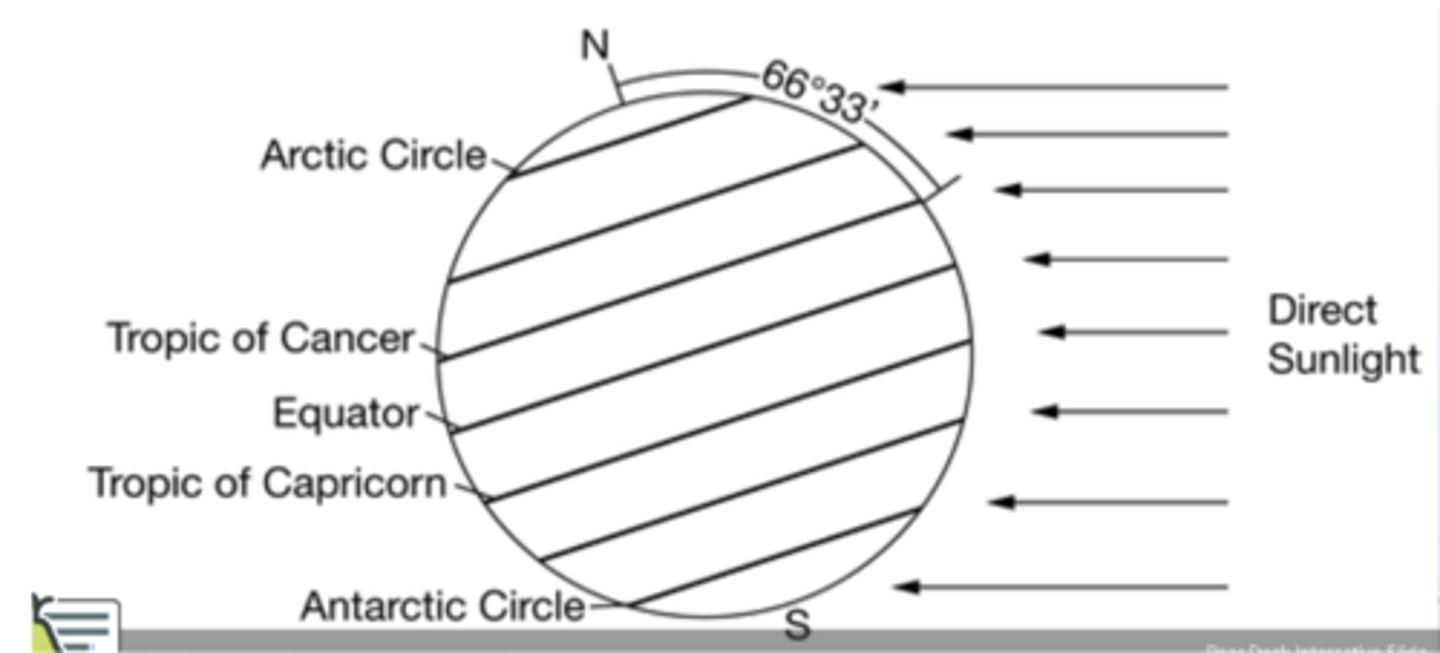
Southern hemisphere
The axis of Earth in relation to the Sun is tilted at a 23.5 degree slant, as illustrated in the diagram below. If the diagram illustrates Earth's relative position on December 21 of a given year, What part of the earth is experiencing summer?
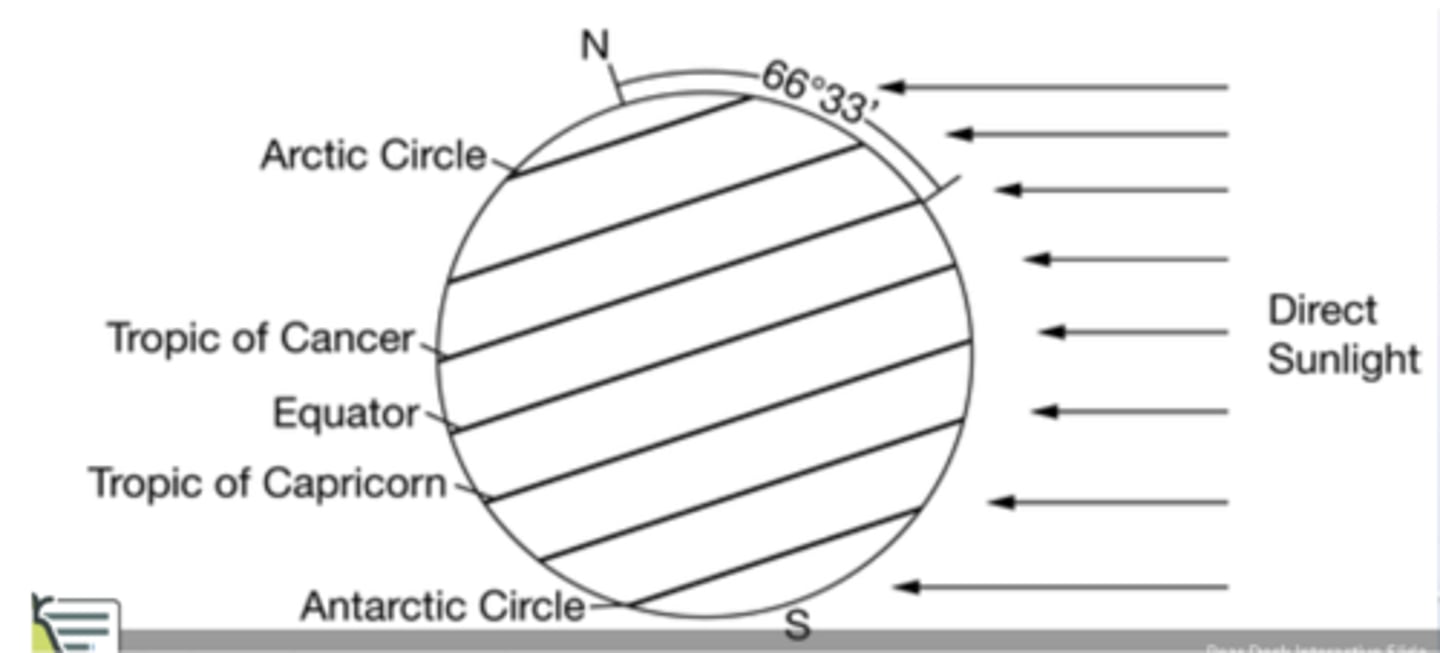
The Tropic of Capricorn, because this latitude is nearly horizontal to incoming solar radiation.
What area receives the most intense solar radiation at the time of year shown in the diagram, and why?
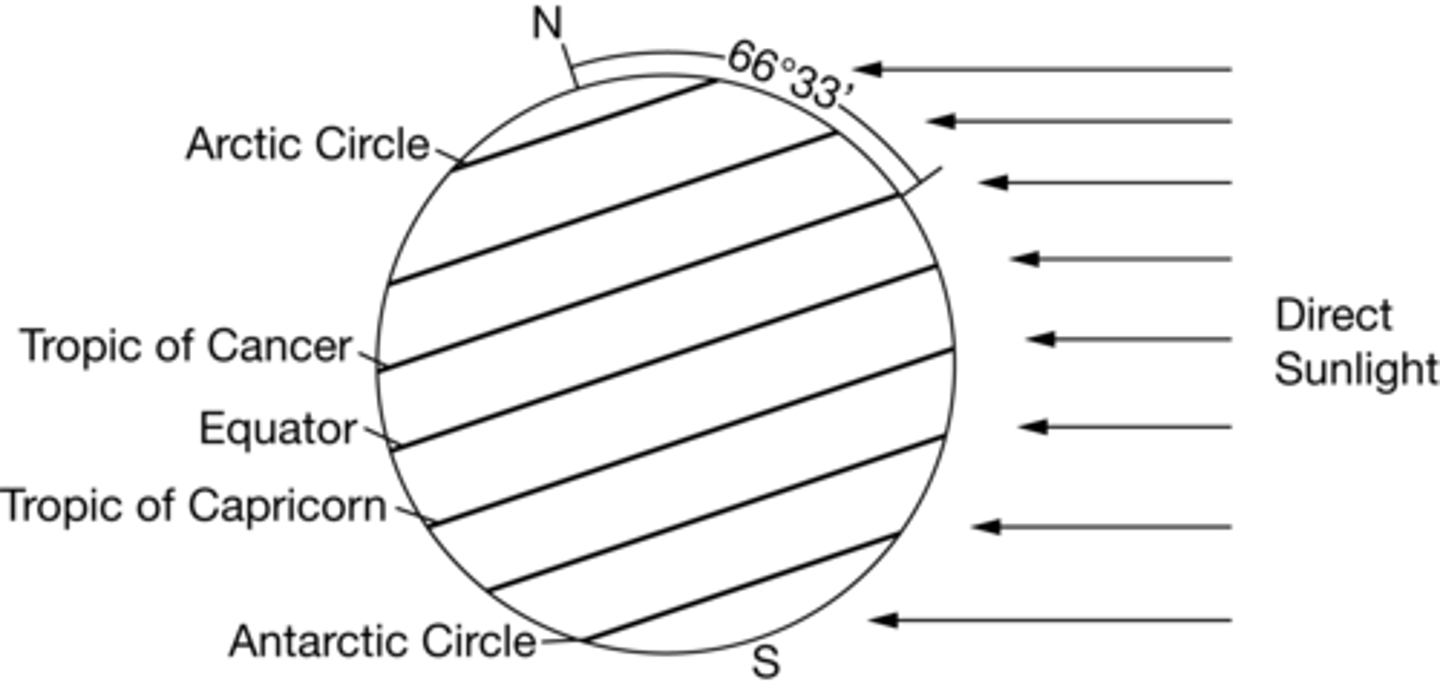
The Northern Hemisphere is tilted away from the Sun so it is winter at the Tropic of Cancer and daylight is less than twelve hours per day.
What correctly describes the season and length of day at the Tropic of Cancer at the time of year shown in the diagram?
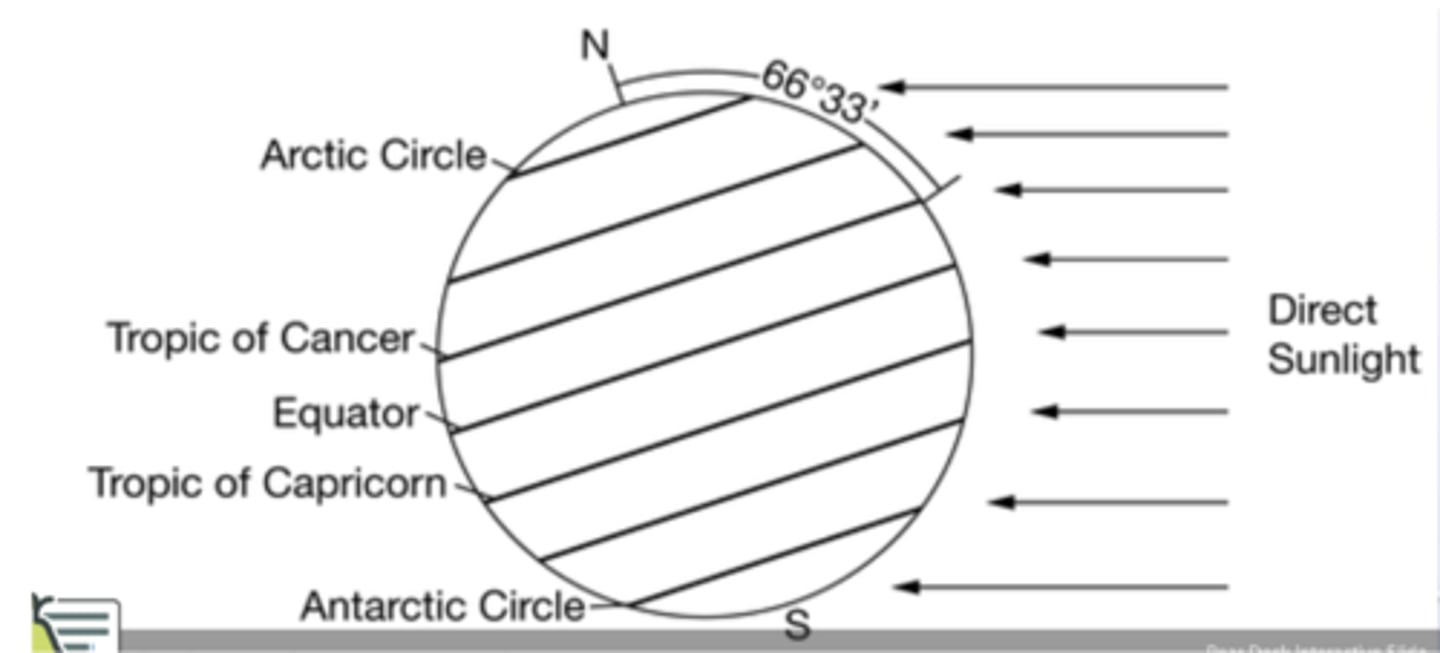
Location 1 is close to the equator, and Location 2 is in the Northern Hemisphere.
The graph shows the relative solar energy received at local noon each day of the year at two different locations. Based on the graph, what can be concluded about the latitudes of the two locations?
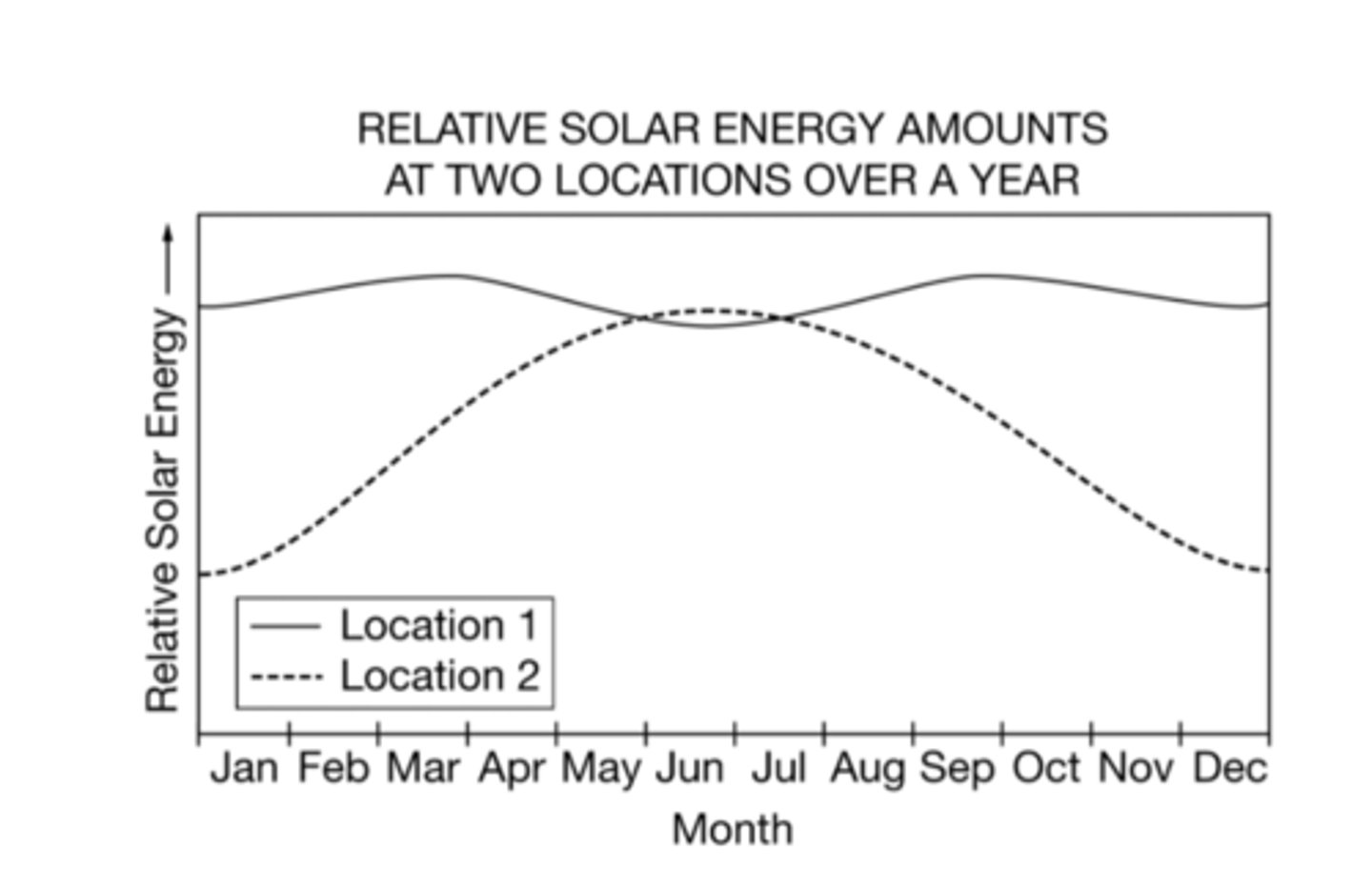
Tilt of Earth's rotation axis, which causes sun angles and daylight length to vary.
The primary cause of Earth's seasons is what?
Earth would experience a change in seasonal timing and length
Earth currently rotates on an axis at an angle of 23.5 degrees. If that axis changed to 20 degrees, so that the axis was closer to vertical, what would be expected to occur?
The tilt of the Earth's axis of rotation
What factors are fundamentally responsible for seasons on Earth?